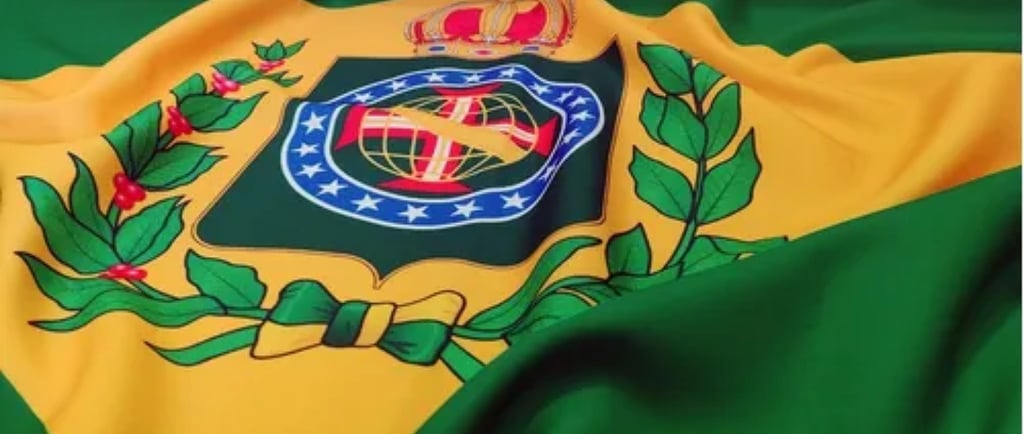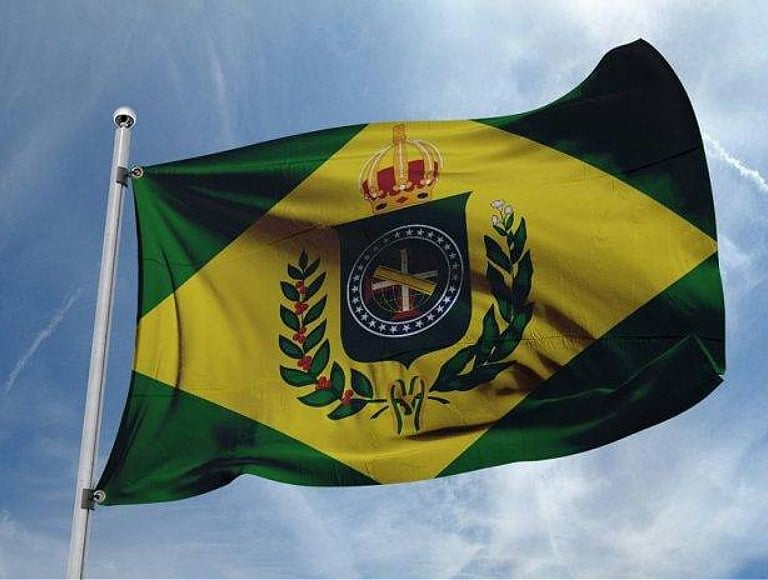Unveiling the Meaning Behind Brazil’s Flag Colors
Unveiling the Meaning Behind Brazil’s Flag Colors. The Tricolor Tapestry of a Nation: Their Profound Transformation with the Advent of the Republic. The flag of the Federative Republic of Brazil, waving proudly in the nation’s skies, transcends mere visual representation of a state. It embodies the multifaceted history of its people—their aspirations, struggles, and ongoing quest for identity.
Everton Faustino
5/13/20254 min leer


The Tricolor Tapestry of a Nation: Unveiling the Meaning Behind Brazil’s Flag Colors and Their Profound Transformation with the Advent of the Republic
The flag of the Federative Republic of Brazil, waving proudly in the nation’s skies, transcends mere visual representation of a state. It embodies the multifaceted history of its people—their aspirations, struggles, and ongoing quest for identity. Each color that composes this national symbol carries a dense semantic weight, echoing historical moments that have shaped modern Brazil. Exploring the origins and metamorphosis of the flag’s colors—from the imperial era to the consolidation of the Republic—reveals a fascinating process of symbolic construction intrinsically linked to the country’s evolution.
During the imperial period, spanning from 1822 to 1889, the Brazilian flag had a distinct design imbued with monarchical symbolism. A green field served as the backdrop for a striking yellow diamond, at the center of which rested the imperial coat of arms. This emblem, adorned with a crown and other heraldic elements of the House of Braganza, radiated the authority and legitimacy of the emperor. The chosen colors were not arbitrary; they were deeply rooted in the royal lineages that shaped the Brazilian Empire. Green evoked the vast tropical forests of the Brazilian territory—a natural wealth that fueled the economy and defined the landscape. However, its primary association lay with the House of Braganza, the ruling dynasty of Dom Pedro I. Yellow, on the other hand, shimmered like the abundant gold mined from colonial lands, sustaining the imperial economy. Symbolically, it was also tied to the House of Habsburg, to which Empress Maria Leopoldina belonged. The presence of the imperial coat of arms reinforced the central role of the monarch and the continuity of dynastic traditions.
The Proclamation of the Republic on November 15, 1889, marked an indelible turning point in Brazil’s history, ushering in a new political and social system. This paradigm shift necessitated a reconfiguration of national symbols to reflect republican ideals of popular sovereignty, secularism, and progress. The flag, as a cornerstone of national identity, could not remain untouched by this transformation. The new flag’s design sought to break away from monarchical references while preserving elements deeply ingrained in the collective imagination. Thus, green and yellow—strongly associated with Brazil since the imperial era—were retained, ensuring visual continuity with the past but reinterpreted under a different ideological lens. The imperial coat of arms, the ultimate symbol of monarchy, was naturally replaced with a celestial blue circle adorned with stars representing the federated states and the Federal District, along with the motto "Ordem e Progresso" ("Order and Progress") in bold capital letters. This phrase, inspired by the positivist philosophy of Auguste Comte, echoed the new regime’s central vision, which sought social stability as a prerequisite for national advancement.
The official interpretation of the republican flag’s colors strategically redefined their meanings, detaching them from royal associations and aligning them with republican values. Green was officially described as representing Brazil’s lush vegetation—its forests and jungles—an intrinsic natural wealth shaping its national identity. Yellow abandoned its exclusive link to the House of Habsburg and instead symbolized the nation’s vast mineral wealth, including gold and other resources driving economic development. The blue of the central circle evoked the starry sky that blankets Brazil, uniting its diverse states under a common homeland and reinforcing the idea of sovereignty. The inclusion of white in the banner crossing the blue circle added notions of peace, harmony, and the aspiration for a promising future.
This reinterpretation was not merely a semantic exercise; it formed part of a deliberate strategy by the republican elite to consolidate the new regime while erasing vestiges of the monarchical past. By assigning fresh meanings to the flag’s colors, the Republic sought to construct a new national narrative grounded in progress, order, and unity. However, this transition was neither immediate nor undisputed. For years, debates persisted regarding the true implications of these changes, with the memory of the imperial era and familiar associations of colors resisting the symbolic erasure attempted by the Republic.
Despite the intended symbolic rupture, the republican flag retained an undeniable aesthetic connection to its predecessor. The preservation of green and yellow ensured visual familiarity, facilitating public acceptance of the new emblem. This continuity underscores how national symbols often carry historical weight that transcends political shifts, continually being reinterpreted to adapt to evolving contexts and ideologies. By maintaining the primary colors of the imperial flag, the Republic demonstrated a pragmatic understanding of symbolic continuity in nation-building. Once tied to European dynasties, these colors were rebranded with meanings aligned with the Republic’s vision of Brazil.
The transition from monarchy to republic not only redefined symbols but also altered the historical backdrop of events witnessed by the flag. The imperial standard observed pivotal moments such as the gradual abolition of slavery—a process fraught with tensions and resistance yet culminating in a civilizational milestone. It fluttered above cities illuminated by gas lights heralding modernity and saw the arrival of the telegraph, shortening distances and connecting the vast nation. The imperial flag presided over the flourishing of sciences under Emperor Pedro II’s patronage—a period of intellectual and scientific advancement. However, the republican flag, with its newly interpreted colors, came to silently represent a sometimes somber reality. Today, it waves over a country still grappling with social inequality, where corruption across multiple spheres of public and private life erodes institutional trust and diverts crucial resources. Impunity, an open wound in Brazil’s justice system, allows many illicit acts to go unpunished, corroding the foundations of a fair and equitable society. This new era, ironically under the motto "Order and Progress," often starkly contrasts with the persistent challenges the nation faces, marked by ethical lapses and fragile governance mechanisms.
Studying the historical evolution of Brazil’s flag colors offers valuable insight into the symbolic construction of national identity. By adapting and reinterpreting existing colors, the Republic sought not only to distance itself from its imperial heritage but also to embed a new vision of Brazil in the collective consciousness. The tricolor tapestry of the flag thus stands as a powerful testament to the political, social, and cultural transformations that have shaped Brazil—a dynamic emblem whose history is inextricably intertwined with that of the nation itself. With each wave in the wind, it carries not only the colors of a country but also the layers of meaning woven into its rich and complex trajectory.




